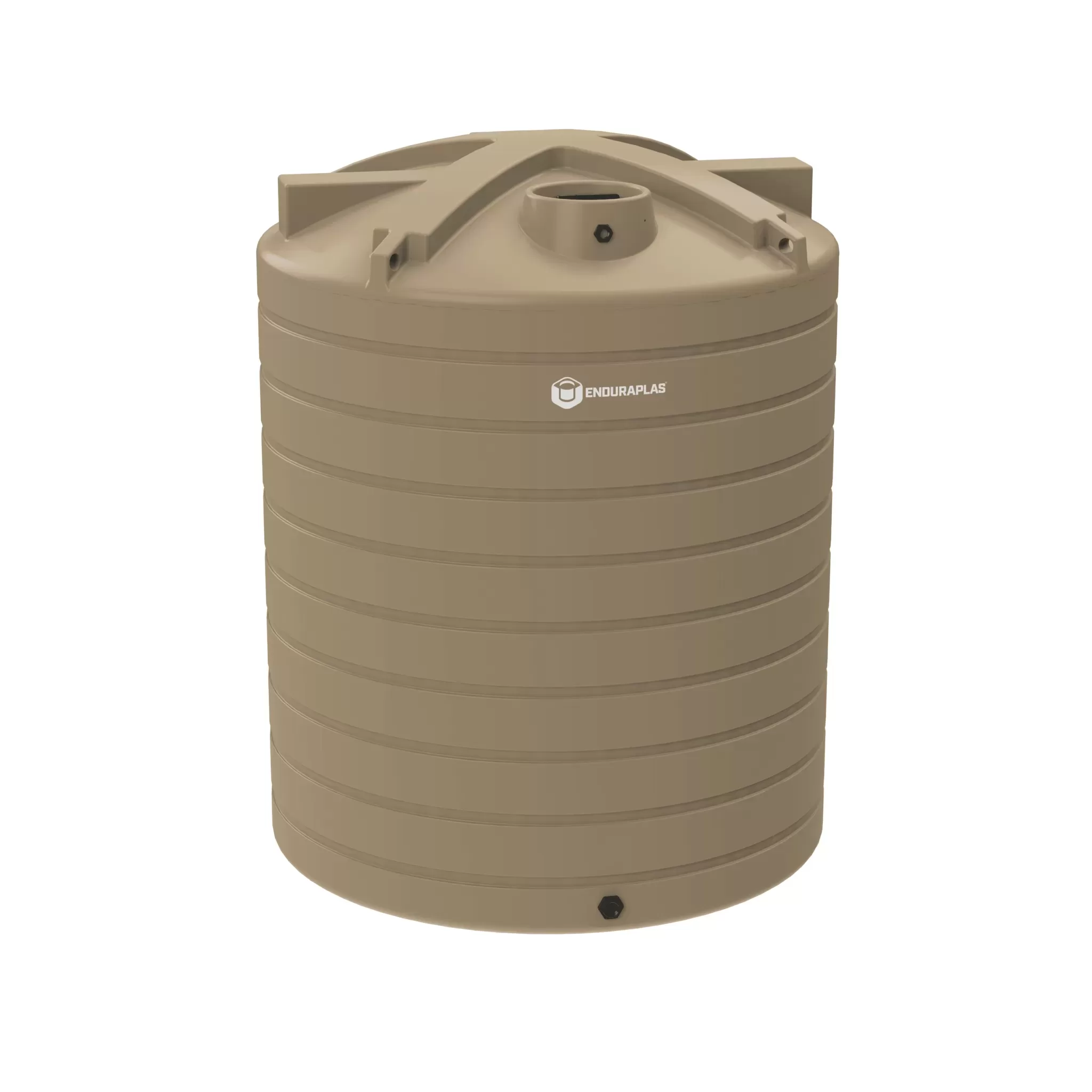The Complete Guide to the Enduraplas Water Storage Tank
-
Team Enduraplas
The Complete Guide to the Enduraplas Water Storage Tank
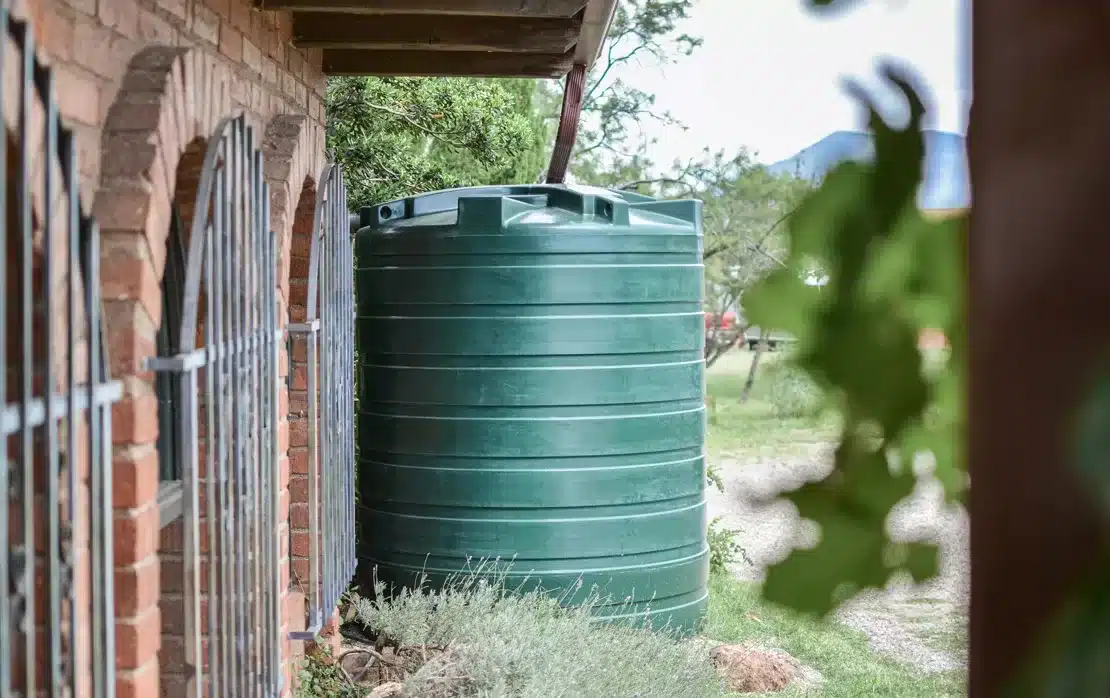
Rainwater harvesting is an age-old practice that has evolved significantly over the centuries. Today, it supplements daily water usage for irrigation, livestock watering, and drinking as a critical solution in water-scarce environments. Whether you’re a seasoned rainwater harvester or exploring water storage solutions for the first time, understanding the essentials and benefits of a high-quality storage system is crucial.
That’s why Enduraplas® tanks are rotomolded with a high-quality polymer and engineered with premium features to make water storage easier. This complete guide delves into the Enduraplas water storage tank, highlighting its strengths and applications to empower you in making the right decision for your water storage needs.
Understanding Rainwater Harvesting and Water Storage
Rainwater harvesting is a practice that dates back centuries and is used to collect and store rainwater for various household purposes, including drinking, flushing toilets, and irrigation. Your rainwater harvesting system could be as simple as having a roof to catch water, gutters to direct the water, and a storage tank to store the water. Adding things like a first flush system, water purification tools, and pumps can help the water collection process, but it all depends on what you want to use your rainwater for.
Water storage is equally important, particularly in emergencies or in areas that don’t get enough rainwater to supply an entire household. Typically, these tank owners are in rural areas and operate off a water well system. Water deliveries are crucial to maintaining a full tank when rainwater doesn’t fill the tank. Some companies deliver water by truckload, usually 2500 to 3000 gallons, to help fill wells that can’t keep up with demand or have gone dry. Whatever your reason for getting a water storage tank is, Enduraplas tanks are built for it.
The Enduraplas Water Storage Tank
LIGHT-BLOCK TECHNOLOGY
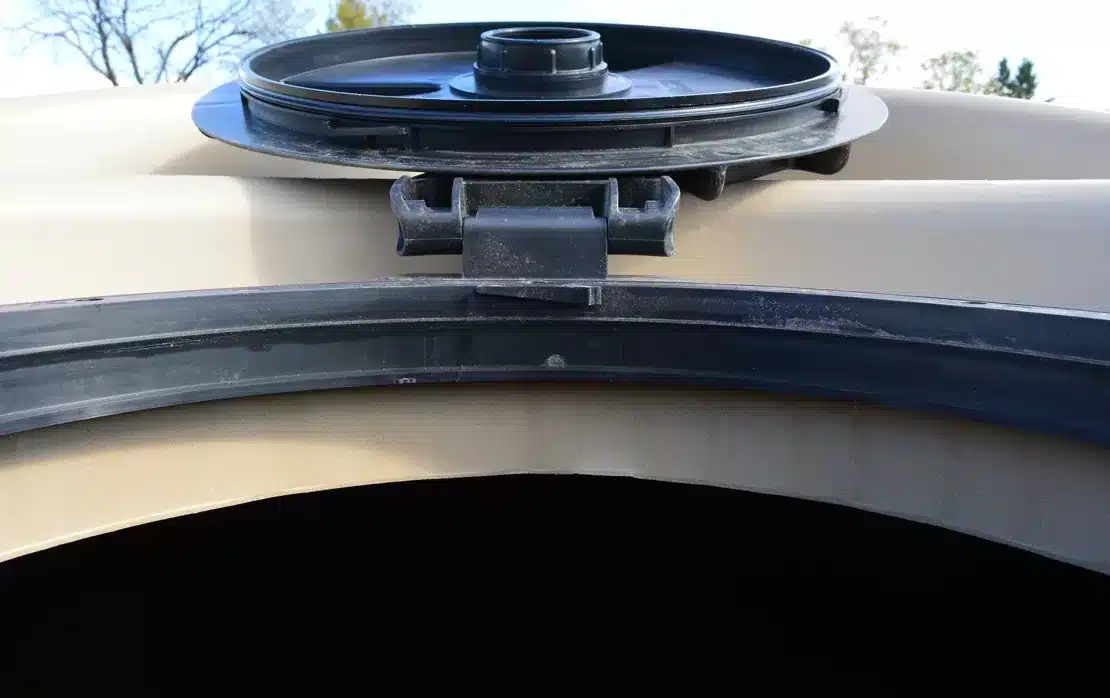
Algae is a bacteria that can carry toxins harmful to animals, humans, and plants. Algae growth in your water tank will make your harvested water nearly unusable. Algae needs sunlight to grow in water, so we’ve built our tanks with Light-Block Technology.
Light-blocking technology is unique to Enduraplas tanks, and if you are using the water from your tanks to pump into your home, light-block technology is a must. Once algae grows in your tank, you must completely drain the contaminated water from it and clean the interior of the tank with bleach to ensure that every spot of algae is gone; otherwise, it’s only going to grow back. Enduraplas tank owners don’t need to worry about this as our tanks completely block out the sun even in the hottest climates in the nation.
Strong-X Roof
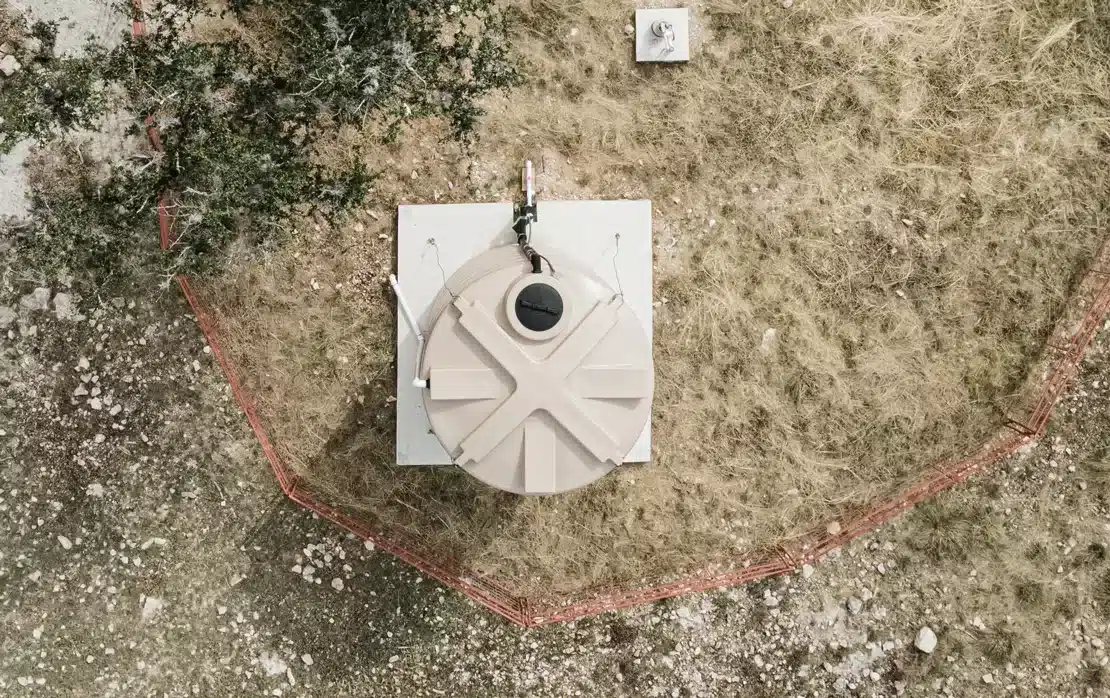
Poly storage tanks expand and contract slightly based on temperature. If your poly tank is exposed to heat for an extended period, like a hot summer day, your tank will actually bulge. When it cools down, it will sink. If it bulges too hard or too long, it’ll pull the top of the tank down and collapse by sinking into the actual tank.
Enduraplas water storage tanks are built with a Strong-X Roof that reinforces the roof’s structural integrity and helps it withstand the pressure of bulging and sinking. The X-pattern design is molded into the tank and acts like truss supports, just like you’d find on a house. Enduraplas water tank roofs are proven to support more than the industry standard.
RIBBED WALL STRUCTURE

Enduraplas’ Ribbed Wall design works together with the Strong-X Roof. The molded-in ribs on the tank walls prevent excessive bulging and contracting. These ribs act like belts around the tank, keeping it in shape no matter how hot it gets. Our Ribbed-Wall design is one of the most rigid on the market and is built to protect every drop of your water.
Enduraplas Water Tanks Tips and Tricks
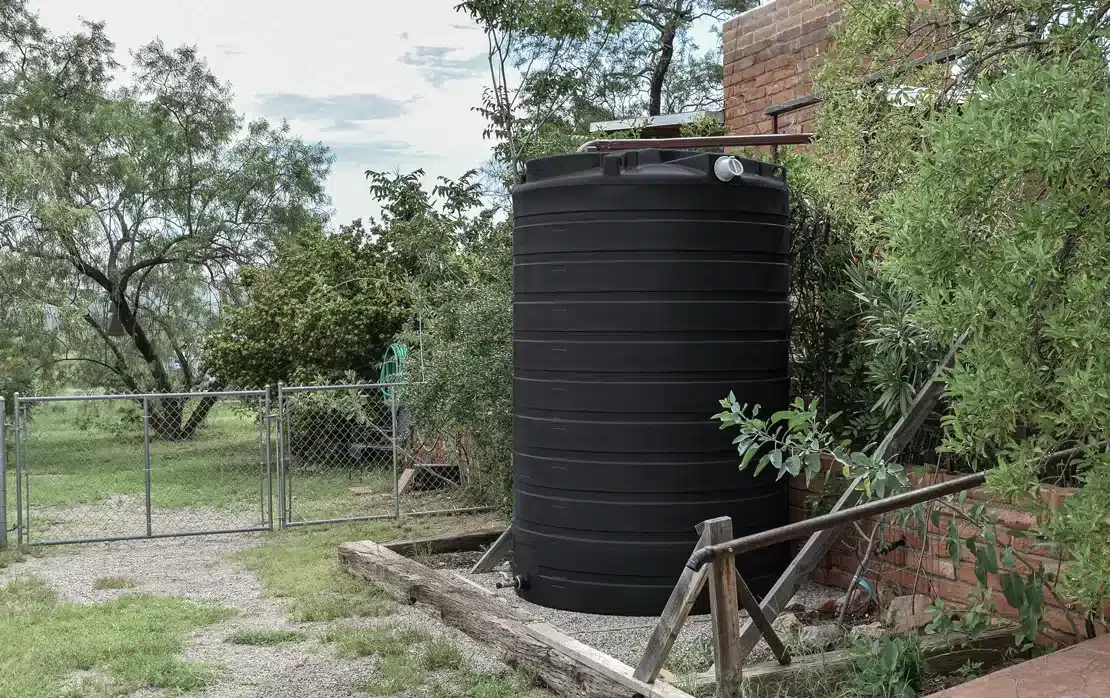
Warranty and Setup
All Enduraplas tanks come with a 10-year manufacture defect warranty. The average tank warranty will cover three or maybe five years, but at Enduraplas, we back what we built for an entire decade of dependability. While we ask our users to register their serial number to activate your 10-year warranty, no additional cost is involved. If your tank malfunctions in any way without user involvement, it’s covered.
However, like all water tanks, there are some precautions to be aware of when setting up your Enduraplas tank. We urge our customers to use flexible connections on their tanks. All poly tanks expand and contract based on temperatures, and rigid piping does not allow the tank to expand and contract freely, resulting in cracks and leaks in the tank’s walls. This doesn’t mean you can never use PVC piping; it means to use flexible connections that connect directly to your tank. Flex piping flexes just enough so the tank can move independently.
Maintenance
The most maintenance you’ll find with Enduraplas tanks involves the components you add to your system. Things like first flush systems, filters, and gutters must be cleared out after big storms, as leaves and branches can get caught and cause damage to your rainwater harvesting system.
Aside from that, it is essential to “rotate” the water in your Enduraplas tank. The FDA recommends emptying the water in your tank if it has remained stagnant for over six months. However, if you are using the water in your tank or if fresh water is coming in weekly, this is not something to worry about.
How To Determine The Right Size Water Tank For You
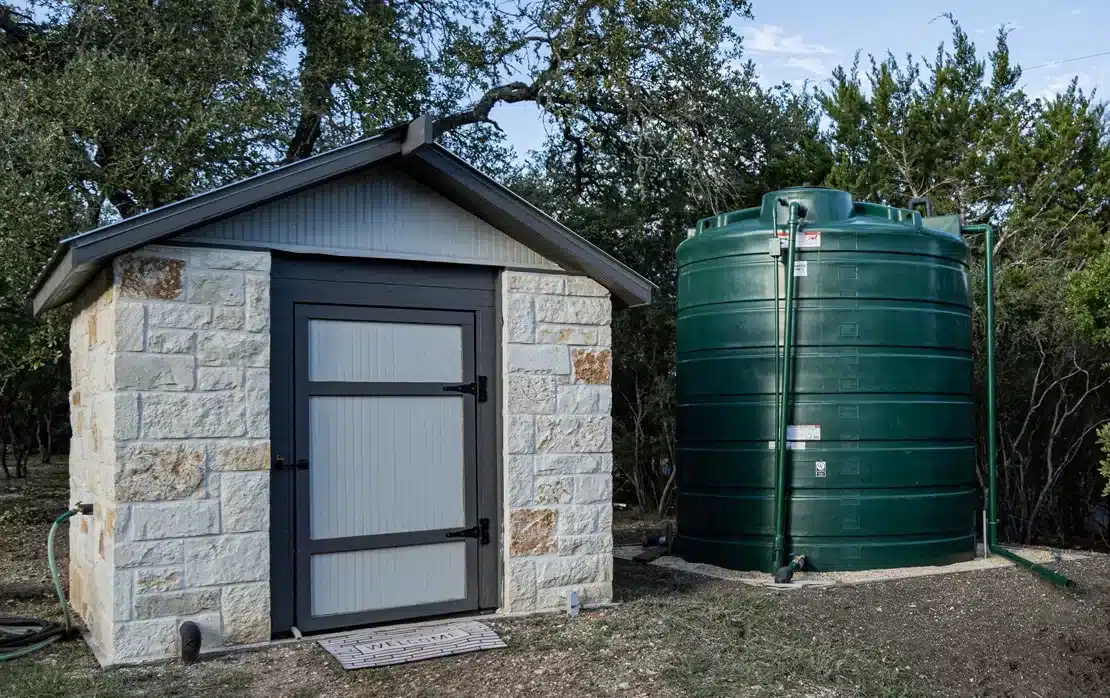
The best way to determine the correct size water tank is to follow this calculation: For every 1,000 sq feet of roof, you can catch about 600 gallons of water on a 1-inch rain. So, with that in mind, you must factor into what you will use the water for.
With the amount of roof space you have, you may be able to catch 10,000 gallons of water, but you may not have room for a 10,000-gallon tank; you may only have room for a 500-gallon tank. While larger tanks provide more storage capacity, they require more space and may be an eyesore for your landscape. After all, this is something that you’ll be seeing every day.
On the other hand, while smaller tanks might seem like a low-commitment start, they can fill up quickly, especially in areas with frequent rainfall. While a small rainwater storage tank is attractive, once you commit to being a rainwater harvester, you’ll find that a small 100-gallon tank is simply too small to harvest rain in. However, smaller tanks may be perfect for emergency water storage solutions. However, if you ask us, we wouldn’t waste time or money on any tank less than 500 gallons for rainwater harvesting.
Whatever size you choose for your property, rest assured that Enduraplas water storage tanks will provide years of unmatched protection for your water source. For whatever you use it for, trust Enduraplas to protect every drop.

